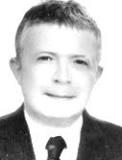HealthManagement, Volume 15 - Issue 1, 2015
In 2013 the elderly population in Turkey was 7.7% of the total. Population projections predict a rise to 10.2% in 2023, 20.8% in 2050 and 27.7% in 2075. As at 2013 Turkey already had one of the highest proportion of elderly according to the United Nation’s definition of 60+ (TUIK 2014).
In addition, the elderly population has the highest level of growth compared to other age groups. Although the total population growth in Turkey was 13.7% in 2013, the elderly population growth stood at 36.2%, roughly three times higher (TUIK 2014).
Migration from rural areas to the city started in the 1950s, and has rapidly increased in the last 30 years, due to the enhancement of the health condition of mothers and children, the increase in education levels and the rate of women’s involvement in socioeconomic life. After the 1980s the birth rate decreased, and as a result the total fertility rate regressed to 2.16 children from 5. Life expectancy in Turkey has increased over the years due to the decrease in infant deaths. Although life expectancy was 30 for men and 33 for women in the 1940s, now it has risen to 71 for men and 76 for women. The Turkish Statistical Agency (TUIK) predicts that life expectancy will be 73.1 for men and 78.9 for women in 2025. This shows that Turkey’s population will continue to get older, and women will be predominant amongst the geriatric population (Tezcan 2012).
Sources
World Health Organization (2013) Turkey-Countr y Statistics http://www.who.int /countries/tur/en/
World Bank (2013) Turkey Death Rate http://data.worldbank.org/indicator/SH.DYN.MORT
Turkish society has a history of caring for its elders. As the bond between family members is still strong, elders prefer to live with their children or close to them. This preference is thought to be really advantageous for the elders, and also for their children socially and economically.
The education level of the elderly population is rather low. 84% of women and 70% of men appear to be barely literate or illiterate. 56% of the elderly population earn any kind of income. Only 75% of men have a reasonable income, while for women this rate decreases to 38%. While 10% of elderly men work, only 1% of women do (DPT 2007).
Although geriatrics is a new field in our country, studies continue to develop fast and sharpen awareness of elderly care. The geriatric disciplines studied at our universities, the geriatric centres in our hospitals and foundations, which carry out the relevant research studies, are the best evidence of improvement. The geriatric disciplines and centres were first established in Turkey in the 1980s with the Cerrahpaşa Medical Faculty, and became popular in other faculties beginning in the mid 1990s. By 2015 the geriatric discipline was established at 13 medical faculties.
Geriatrics is a subdivision of internal medicine, and four years of training is required to become an internist. Three further years of training in caring for patients both on wards and in outpatient services are crucial in order to become a geriatrician. There is also a compulsory service that has to be completed after completing the geriatrics residency, the duration of which varies between 300 and 600 days, depending on the region of the country. In Turkey there are 35 lecturers, six specialists and 19 residents working in the field Total population 74,993,000 gross national income per capita (PPP international $) 18,760 Life expectancy at birth m/f (years, 2012) 72/78 Probability of dying under five (per 1,000 live births) 19 Probability of dying between 15 and 60 years m/f (per 1,000 population, 2012) 150/75 Total expenditure on health per capita (Intl $, 2012) 1,144 Total expenditure on health as a percentage of gDP (2012) 6.3 of geriatrics. geriatric nursing is not a separate section in Turkey; elderly patients are cared for by internal medicine nurses.
The Darülaceze Foundation is the oldest establishment of elderly nursing with a tradition of 150 years. Such foundations for the elderly continue to provide important services and studies (Arıo ul 2009).
The major panels, symposia, congresses and courses on geriatrics are the National geriatrics Congress, the
Academical geriatrics Congress, the Rational Drug Symposium, the National Elderly Health Congress, the geriatric Haematology Congress, the geriatric Oncology Congress, and the list may continue.
Besides Ege Universit y Medical Faculty, which has an elderly health postgraduate programme and holds a geriatrics nursing licence, Adnan Menderes University Medical Faculty has an elderly health and nursing postgraduate programme.
Conclusion
geriatric services are still primarily provided in medical institutions. Although civil and official foundations’ efforts have increased, a widespread and systematic service regarding the provision of medical care at home has not been implemented yet.References:
Arıoğul S (2009) Akademik Geriatri Dergisi, Turkiye’de Geriatri. [Accessed: 25 December 2014] Available from
http://www.akadgeriatri.org/managete/fu_folder/2009-01/html /2009-1-1-001-002.htm
T.C. Başbakanlık Devlet Planlama Teşkilatı (DPT), Sosyal Sektor ler ve Koordinasyon Genel Mudur luğu (2007) Turkiye’de Yaşlıların Durumu Ve Yaşlanma Ulusal Eylem Planı.
[Accessed: 25 December 2014] Available from http://www.bebka.org.tr/admin/datas/sayfas/files/Turkiyede_yaslilar.pdf
Tezcan S, Seckiner P (2 012) Turkiye’de Demografik Değişim; Yaşlılık Perspektifi. In Aslan D, Ertem M, eds. Yaşlı Sağlığı: Sorunlar ve Cozumler. Ankara: Palme Yayıncılık, pp. 1-8.
Turkiye Istatistik Kurumu (TUIK) (2014) İstatistiklerle Yaşlılar, 2013. [Accessed: 24 December 2015] Available from: http://tuik.gov.tr//PreHaberBultenleri.do?id=15974



